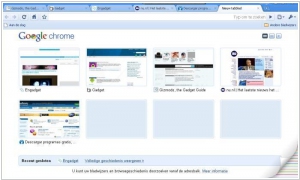Google Chrome vs Vivaldi
September 07, 2023 | Author: Adam Levine
See also:
Top 10 Web Browsers for Business
Top 10 Web Browsers for Business
Google Chrome and Vivaldi are two popular web browsers, each with distinct strengths and features that cater to different user preferences. Google Chrome is renowned for its speed, stability, and seamless integration with Google's ecosystem, offering users a vast collection of extensions and apps through the Chrome Web Store. It provides a straightforward and user-friendly interface, making it an ideal choice for users who prioritize a simple and efficient browsing experience. On the other hand, Vivaldi places a strong emphasis on customization and control, allowing users to tailor their browser to suit their specific needs. Vivaldi offers an array of advanced features, such as tab grouping, extensive tab management options, and built-in tools like notes and screenshots, appealing to users who prefer a highly customizable and power-user-friendly browser.
See also: Top 10 Web Browsers
See also: Top 10 Web Browsers
Google Chrome vs Vivaldi in our news:
2023. Vivaldi launches an iOS version of its browser
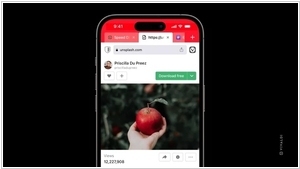
Vivaldi, a popular alternative browser, has released its iOS version, following its 2018 launch for Android devices. Due to the current requirement for iOS browsers to use WebKit as the core engine, Vivaldi has adopted the same engine for its iOS version. One of the standout features of Vivaldi for iOS is its desktop-like tab bar, allowing users to easily view open tabs without navigating to a separate tab switcher. If this view isn't preferred, users have the option to disable it in the settings. The tab switcher provides access to open tabs, private tabs, synced tabs across different Vivaldi instances, and recently closed tabs. Additionally, a long-press on the tab switcher enables users to quickly open a new or private tab or close the current tab.
2021. Vivaldi 4.0 launches with built-in email and calendar clients, RSS reader
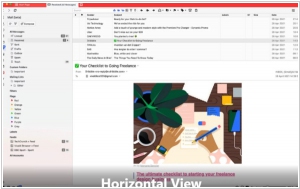
Vivaldi has consistently stood out as one of the more intriguing Chromium-based browsers, primarily due to its commitment to providing power users with a privacy-focused experience. Today, the Vivaldi team is unveiling version 4.0 of its browser, accompanied by an array of exciting new features. Notably, this update introduces the beta versions of built-in mail, calendar, and RSS clients, further enhancing the browsing experience. Additionally, Vivaldi is launching Vivaldi Translate, a privacy-conscious translation service hosted on the company's own servers and powered by Lingvanex. These additions highlight Vivaldi's dedication to providing innovative tools within a privacy-centric framework.
2020. Google Chrome update brings better tab management, QR codes, plus performance improvements
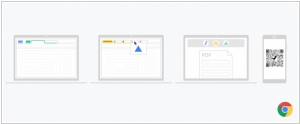
Google is enhancing the usability of Chrome's tabs and tab groups, aiming to make them more convenient and efficient. Behind the scenes, these improvements promise faster page loading times by up to 10% and a reduction in the impact of idle background tabs. Chrome now allows users to collapse and expand their tab groups, enabling them to focus on the tabs they need to access immediately. Additionally, a new QR code feature will be introduced in Chrome for desktop, accessible through a QR code icon in the Chrome address bar. Furthermore, Google will soon release a highly anticipated feature that enables users to directly fill out and save PDF forms within Chrome.
2020. Google Chrome now allows to organize tabs to groups
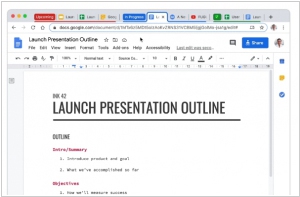
Google Chrome is introducing a fresh functionality to enhance your tab management. With tab groups, you can conveniently organize, label, and even assign colors to your tabs. To utilize this new feature, simply right-click on a tab and select "Add tab to group." From there, you can either choose an existing group to move the tab to or create a new one, which you can name and label. Furthermore, Chrome browser now includes a feature to block ads that deplete your device's battery life or unnecessarily consume your internet bandwidth.
2018. Google Chrome gets a fresh look, better omnibox, and more
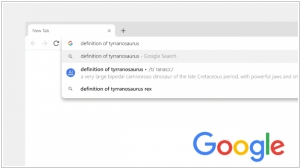
Google Chrome is introducing a redesigned look and an array of fresh functionalities, including an enhanced omnibox. The browser now features more rounded corners and a revamped color palette, presenting a visually pleasing interface. The tab design has been optimized to improve the visibility of site favicons, facilitating seamless navigation. Notably, on iOS devices, where Chrome has long awaited attention, the toolbar has finally found its rightful place at the bottom of the screen, closer to the user's thumbs. Excitingly, the update brings new customization options as well. Users can effortlessly change the background image and site suggestions on the "new tab" screen. Autocomplete functionality receives a long-awaited upgrade, now displaying site favicons in the dropdown list. Moreover, Chrome will provide answers to certain queries directly within the autocomplete list, even before the user presses the Return key.
2018. Microsoft improves anti-phishing skills of Edge competitor - Google Chrome
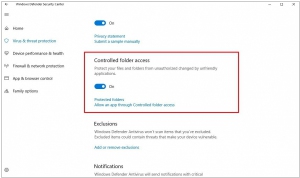
Microsoft has made a significant move by offering a valuable asset of its Edge browser to its competitor Google. They have released an add-on called "Windows Defender Browser Protection" (WDBP) that enhances Chrome's ability to detect phishing attempts. This free extension can be easily installed on Chrome running on Windows, macOS, and, following a post-launch fix, even on Chrome OS. Similar to the security measures integrated into Edge, this add-on leverages Microsoft's SmartScreen technology to alert users about potentially harmful websites that may attempt to download malware or lead to known phishing URLs through email message links.
2017. Google launched Chrome Enterprise Bundle
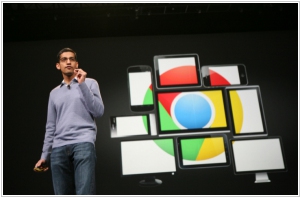
Google has introduced the Chrome Enterprise Bundle, a solution designed to simplify the deployment and management of its Chrome browser for IT admins in businesses. This comprehensive package includes a single installer for the Chrome browser, the Chrome Legacy Browser Support extension (which enables the use of ActiveX widgets), and a collection of administrative policy templates. Notably, Google's browser now offers official support for Citrix's XenApp virtualization platform and Windows Server with Terminal services. With these enhancements, IT administrators will find it more convenient to implement Chrome within their organizations, streamlining the deployment process.
2015. Google to stop supporting Chrome for Windows XP and Vista
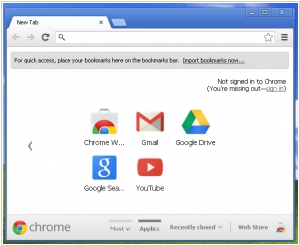
Google has recently declared the discontinuation of Chrome support for Windows XP. Commencing from April 2016, users utilizing Chrome on XP will cease to receive updates and security fixes. While the cessation of XP support was somewhat expected, Google has also announced that Windows Vista and Mac OS X 10.6, 10.7, and 10.8 will no longer be supported. This decision stems from the fact that Microsoft and Apple no longer actively support these platforms. In the past, Google, Microsoft, and other software companies extended their support for these outdated platforms to mitigate the risks posed by viruses and malware. However, running unpatched versions of Chrome or Internet Explorer on these platforms would have amplified their vulnerability, making them even more susceptible to threats.
2013. Google invented desktop-apps. Inbuilt own Start button into Windows
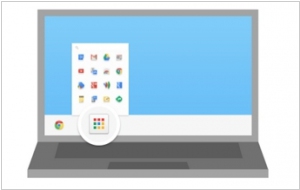
Today commemorates the 5th anniversary of Google Chrome, and in their blog post published today, Google begins by stating that five years ago, they initiated the Chrome project with the aim of advancing the Web platform... and so on. Subsequently, they unveil the latest milestone achieved by this Web platform: desktop applications. Going forward, the Chrome browser for Windows and Chrome OS will support applications that can operate entirely on the desktop, without requiring an internet connection. To accommodate these applications, a dedicated section has been established within the Chrome App Store. Furthermore, Google introduces the Chrome App Launcher for Windows—a taskbar button that, upon activation, displays a list of installed Chrome apps (similar to the regular Start button). The apps launched from this list open in their own windows, akin to typical Windows programs, rather than within the web browser. Thus, it appears that Google is not concerned about the distinction between web and non-web. Their objective is simply to supplant Windows with Chrome on users' computers.
2012. New Chromebooks: 100% faster, 0% cheaper
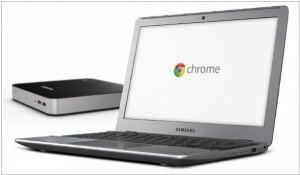
The main idea behind Google Chromebooks and ChromeOS was something like this: "If computer is mainly used to work in browser, why not make a simple, reliable and cheap computer, which runs just browser?". Unfortunately, Google hasn't brought this experiment to the end. No, Google Chromebooks project is not closed. On the contrary, yesterday Google and Samsung presented the new Chromebook model. But the project went far aside from the initial idea. Somewhy, Google and Samsung haven't make Chromebooks cheap. The new Samsung Series 5 Chromebook costs from $449. So the question is: Why buy Chromebook that has only browser if almost for the same money you can buy a Windows-laptop with all the bells and whistles? And you know how Google responds to this question? ***

